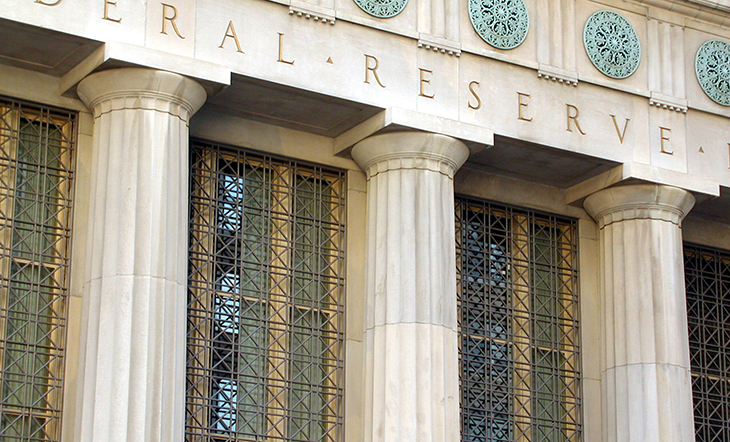Back in mid-2017, Janet Yellen compared the Federal Reserve’s steady policy normalization and balance sheet reduction to “watching paint dry”—low on drama and surprise. Policymaking is clearly much more eventful now, as are the market’s responses.
Today’s FOMC meeting was probably the only one of the new Powell era that was anticipated with near obsession by market participants, economists and the media as to official guidance and monetary policy, and how the dots would be rearranged, if at all. Underpinning this focus is considerable worry about cyclical decline in the economy, as well as potential policy mistakes of going too far or relying too much on traditional indicators and economic models.
In a key sense, the meeting turned out to be drama-free. As expected, the FOMC chose to raise the fed funds rate by 25 basis points, bringing it to a 2.25 – 2.5% range. However, in contrast to Chairman Jerome Powell’s relatively hawkish view of just a couple months ago, messaging from the meeting was more moderate, with a modest move downward in the “dot plot” of forward rate expectations despite strong backward-looking measures including GDP, unemployment and wage growth. Eleven out of 17 board members expect two hikes or less next year, which would bring the fed funds rate well into the 2.5 – 3.0% “zone of neutrality” described by Powell previously. In terms of market response today, we saw the yield curve flattening, lower inflation expectations, wider credit spreads, dollar strength and lower equity prices, which reflected disappointment among investors who were anticipating a more dovish statement by the FOMC.
In his press conference, Powell noted “cross-currents” including market volatility, softer global growth and below-target inflation as factors in the change. He said the FOMC would also look at “global economic and financial developments” to assess their impact for the economic outlook. Still, the group believes that while U.S. growth will moderate next year, it should remain above trend at 2.3% (the FOMC median), or enough to lower unemployment to about 3.5%. Overall, the picture isn’t exactly clear, as Powell observed a “high degree of uncertainty about both the path and destination of any further [interest rate] increases.”
Economic and Market Pressure Points
The new, somewhat meeker stance is a welcome nod to reality.
Global economic momentum has indeed been softening, with China slowing and emerging markets continuing to experience a range of idiosyncratic issues. Europe’s expansion has already eased to its trend line, while uncertainty tied to Brexit and the Italian fiscal situation, political shifts in Germany and France’s travails with “yellow vest” protesters have contributed to a volatile backdrop.
In the U.S., capital expenditures have been uninspiring, and show how little of the fiscal stimulus is flowing through to the economy. Stock investors have also been very worried about a peak in profits and earnings, reflected in the unforgiving reactions to any companies that missed earnings projections.
In the bond market, the near inversion of the two- to five-year Treasury yield curve is a sign of a correction in growth prospects and expected inflation. Breakeven rates are nearly 40 basis points lower than summer highs and way below the 2% inflation target. Relentless widening in credit spreads also reflects ongoing under-confidence in growth potential.
Look to Markets, Not Just Models
Going into the meeting, some of our biggest questions were around inflation. The most significant inflation-related trend in recent years has been the disinflationary impact of globalization, with the transfer of manufacturing from developed to emerging economies. But that trend looks to have plateaued, as shown by global trade volumes, increased populism, tariff wars and impending Brexit. On the other hand, we are seeing an “Uber-ization” of the economy, in which workers seem to be willing to give up higher wages for flexible hours. This tends to create a hole in the Phillips curve, which links wage growth to inflation, and seems to be dampening pricing pressure overall.
All of this suggests, in our view, that the Fed would be well advised to move away from relying too much on traditional models like the Phillips curve and take more of an interest in market and economic signals staring it in the face.
As part of this, a key task will be to solve the puzzle of the negative inflation risk premium that exists in some parts of the yield curve. Unfortunately, the Fed has been unable to deliver on its inflation target over the course of the current expansion. It thought the past two years’ fiscal stimulus could drive up inflation to more healthy levels, but that just hasn’t happened, and forces including, notably, the weak housing market could make that more challenging.
The lack of an effective policy response to negative inflation risk is a clear worry as the economy slows down. Although Powell argued otherwise, ongoing quantitative tightening could be complicating matters. It was probably no coincidence that financial constriction and market volatility increased after October 1, when we reached maximum velocity in Fed balance sheet unwinding.
Soft Landing Ahead?
Stepping back, we do believe that reports of impending disaster are exaggerated. The Fed is likely to be successful in engineering a soft landing for the U.S. economy next year. The consumer is in good shape, with household net worth on the upswing. And although Europe’s economic results have been disappointing, we believe that emerging market economies are likely to stabilize, even with a weakened Chinese growth rate. Moreover, U.S. labor market slack and a more stable inflation outlook should allow the Fed to pause for the first half of 2019, potentially introducing one or two more rate hikes late in the year.
Along the way, markets will likely experience significant market volatility while investors will watch warily as the Fed communicates more (after every meeting) and executes its data-driven approach, which will look to keep its options open in a painful market environment.
Like watching paint dry? If only.






